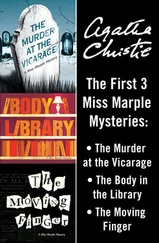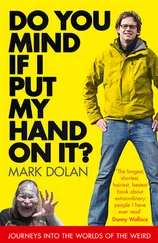Robert Monroe - Journeys out of the body, Practical Guidebook
Здесь есть возможность читать онлайн «Robert Monroe - Journeys out of the body, Practical Guidebook» весь текст электронной книги совершенно бесплатно (целиком полную версию без сокращений). В некоторых случаях можно слушать аудио, скачать через торрент в формате fb2 и присутствует краткое содержание. Жанр: Старинная литература, на английском языке. Описание произведения, (предисловие) а так же отзывы посетителей доступны на портале библиотеки ЛибКат.
- Название:Journeys out of the body, Practical Guidebook
- Автор:
- Жанр:
- Год:неизвестен
- ISBN:нет данных
- Рейтинг книги:5 / 5. Голосов: 1
-
Избранное:Добавить в избранное
- Отзывы:
-
Ваша оценка:
- 100
- 1
- 2
- 3
- 4
- 5
Journeys out of the body, Practical Guidebook: краткое содержание, описание и аннотация
Предлагаем к чтению аннотацию, описание, краткое содержание или предисловие (зависит от того, что написал сам автор книги «Journeys out of the body, Practical Guidebook»). Если вы не нашли необходимую информацию о книге — напишите в комментариях, мы постараемся отыскать её.
Journeys out of the body, Practical Guidebook — читать онлайн бесплатно полную книгу (весь текст) целиком
Ниже представлен текст книги, разбитый по страницам. Система сохранения места последней прочитанной страницы, позволяет с удобством читать онлайн бесплатно книгу «Journeys out of the body, Practical Guidebook», без необходимости каждый раз заново искать на чём Вы остановились. Поставьте закладку, и сможете в любой момент перейти на страницу, на которой закончили чтение.
Интервал:
Закладка:
Many practitioners strive to master direct techniques right away because they appear to be the most convenient, straightforward, and concrete techniques. However, it is a grave mistake to begin attempting and mastering phase entrance from this level. In 90% of cases where novices begin their training with direct techniques, failure is guaranteed. Moreover, a vast amount of time, effort, and emotion will be wasted. As a result, complete disillusionment with the entire subject of phase experiences is possible.
Direct techniques should only be practiced after mastery of the easiest indirect techniques or how to become conscious when dreaming. In any case, difficulties will not wear one down afterwards, as it will be exceedingly clear from one's own experience that the phase is not a figment of the imagination. Also, an advanced knowledge of indirect techniques will make it considerably easier to achieve direct entry into the phase.
Quality of the phase experience is not dependent upon the chosen entrance technique. Direct techniques do not necessarily provide a deeper, more lasting phase over indirect techniques.
Direct techniques are better suited for some practitioners and not others, but this ban only be said for a minority of the practicing population. Meanwhile, indirect techniques are accessible to absolutely everyone all of the time.
If a practitioner has decides to begin practice with direct techniques or has gained the necessary experience with indirect techniques, the underlying principles of the techniques must still be learned. Without these, nothing will occur, except coincidentally and in rare cases. The key to the successful use of direct techniques rests in achieving a free-floating state of consciousness. However, we will first examine a large variety of very useful aspects and factors that make direct entry into the phase much easier.
First, we will examine when it is best to perform the techniques and how intensively to exercise their practice. Then, we will examine the very important factor of body position, and the no less crucial issue of how long the techniques should be performed. Then, we will briefly investigate the issue of relaxation, and then we will immediately move on to the actual direct techniques. Only after covering all of the above are we able to delve into the issue of what a free-floating state of consciousness is and how to achieve it.
THE BEST TIME TO PRACTICE
The issue of time is not important with indirect techniques since the major prerequisite is that they are performed immediately after awakening occurs. In the case of direct techniques, the issue of timing is much more critical.
Naturally, the best method for finding the right time to perform direct techniques is the same as indirect techniques – the deferred method . However, there are some serious differences here. First of all, one may interrupt one’s sleep at practically anytime of the night or early morning. Second, after having woken up (5-15 min.), one should not fall back asleep, but should immediately proceed to the techniques.
Direct techniques are many times more effective with the deferred method than at any other time. This is due to the fact that with the deferred method, the mind does not have time to become 100% alert, and it is easy to fall into the altered state of consciousness that will allow results.
When it comes to specific steps, one should awaken in the middle of the night either on one's own or with the help of an alarm clock.
Then, one should get up and do something for 3 to 10 minutes, and then lie down again in bed and perform the techniques. If it is probable that the practitioner will wake up in too alert a state, and thus not even be sleepy, then the interval between awakening and performing the direct technique should be shortened, and fewer things should be done during that period of time. It should be noted that with this setup, a free-floating state of mind plays a far lesser role that with other procedures.
The second most effective window of time is before falling asleep at night , when the practitioner goes to bed. During this period of time, the brain needs to shut down the body and mind in order to renew its strength, which has been expended over the course of the day. This natural process can be taken advantage of by introducing certain adjustments to it.
Attempts at performing direct techniques during the day are less effective. However, if fatigue has already had a chance to build up by this time, this can be taken advantage of because the body will try to fall into sleep. This is especially suited for those who are accustomed to napping during the day.
Generally, other windows of time produce a substantially worse result, which is why one should start with performing direct techniques in the middle of the night, or before a night's sleep. Only after such techniques have been mastered will it be possible to experiment with daytime attempts.
INTENSITY OF ATTEMPTS
The degree of enthusiasm that is devoted to any pursuit is directly related to successfully reaching a goal. However, it is very important to know when to ease up, especially with the delicate matter of phase entry. One attempt per day using a direct technique is sufficient. If more attempts are made, the quality of each attempt will suffer considerably.
Interesting Fact!
Many approach direct techniques as if digging a ditch: the more - the faster and the better. The result: dozens of attempts that yield no fruit.
A lot of practitioners believe that dozens of attempts over the course of a day will yield the phase. This is not the path to success and will quickly lead to disillusionment with the practice. Even if after a week or a month no results are seen, direct techniques should be attempted only once daily. Persistent, analytical, and sensible, stubborn resolve to practice properly will produce the desired effect.
DURATION OF AN ATTEMPT
It is useless to attempt entering the phase using a direct technique by lying in bed and resolving neither to sleep nor get up until the phase occurs. Such coarseness in handling delicate nature of the mind will produce nothing besides rapid emotional exhaustion.
Rigid timeframes apply while performing direct techniques before a sleep or in the middle of the night. Direct techniques attempts should only last 10 to 20 minutes. Longer durations inhibit sleepiness because the mind will concentrate too long on the techniques, and the desire to fall asleep will dissipate, resulting in insomnia that often lasts several hours. Overdone efforts negatively affect natural enthusiasm due lost sleep and being tired the following day, which is compounded by the reality of a growing number of failed attempts.
If direct techniques produce no effect over the course of 10 to 20
minutes before sleep or in the middle of the night, then it is better to go to sleep with the thought that everything will work out another time. This is the positive outlook a practitioner ought to always maintain.
BODY POSITION
With indirect techniques body position isn’t important since conscious awakening regardless of body position is the goal.
However, the position of the body is crucial while practicing direct techniques.
There is not an exact body position that each practitioner should assume since, once again, individual characteristics and instincts differ widely. There are specific rules that allow one to select the right position, based on indirect indicators.
Many hold a belief that the correct pose is that of a corpse – lying on the back without a pillow, legs and arms straightened. This notion has probably been borrowed from other practices claiming that it helps achieve an altered state of mind. However, this position seriously impairs the efforts of the majority of practitioners. The corpse pose should only be used when it is probable that a practitioner will quickly fall asleep while performing techniques in this pose, even though it generally prevents sleep.
Читать дальшеИнтервал:
Закладка:
Похожие книги на «Journeys out of the body, Practical Guidebook»
Представляем Вашему вниманию похожие книги на «Journeys out of the body, Practical Guidebook» списком для выбора. Мы отобрали схожую по названию и смыслу литературу в надежде предоставить читателям больше вариантов отыскать новые, интересные, ещё непрочитанные произведения.
Обсуждение, отзывы о книге «Journeys out of the body, Practical Guidebook» и просто собственные мнения читателей. Оставьте ваши комментарии, напишите, что Вы думаете о произведении, его смысле или главных героях. Укажите что конкретно понравилось, а что нет, и почему Вы так считаете.










